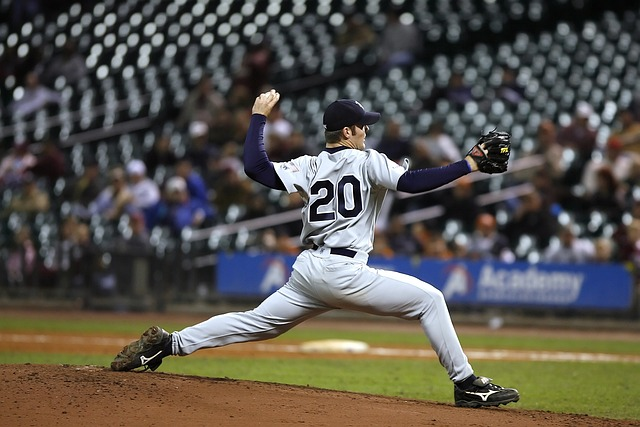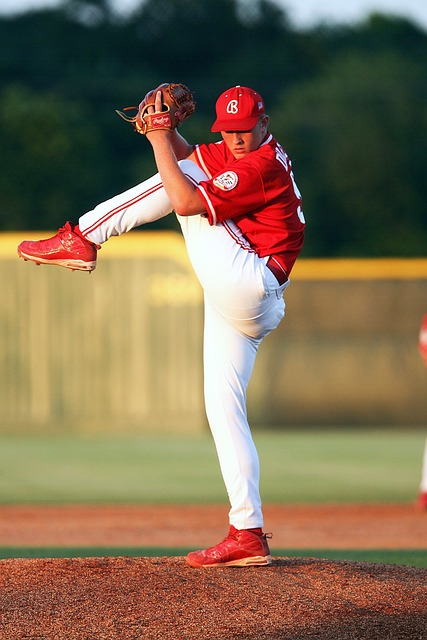
Hello baseball enthusiasts! Welcome to another deep-dive into the exciting world of baseball pitches. Today, we're talking all about one of the most effective pitches - the cutter, or as the professionals call it, the 'cut fastball.' The ability to throw a cutter has been the secret weapon of many successful pitchers, and in this post, we're going to unravel that mystery together. We'll break down how to throw a cutter, get into the specifics of the cutter grip, and provide you with detailed insights that will help you take your pitching game to a whole new level. So, whether you're a right handed pitcher, a left handed one, or someone simply intrigued by the game, stick around and let's cut right to it!
In the upcoming sections, we'll be focusing on everything from the science behind the cutter to common mistakes made while throwing this pitch. Plus, we'll answer some frequently asked questions about this fascinating pitch - What is a cutter in baseball? Why is it called a cutter? And, can a 10-year old throw a cutter?
Now, let's put on our baseball caps and step onto the virtual mound, shall we?

The cutter or cut fastball is a unique and intriguing pitch, blending the speed of a fastball with the movement of a breaking ball. It's a staple in the arsenal of many pitchers, and with good reason. But why is it called a cutter? The answer is simple - it's all about how the ball cuts or moves horizontally towards the pitcher's glove side as it approaches home plate. The subtle but late movement of the cutter can catch hitters off guard, leading to weak contact or, even better, a whiff.
But how does a cutter differ from other pitches? Well, if you've ever wondered about the difference between a fastball and a cutter, or a cutter and a 2 seam fastball, or even a cutter, a slider, and a curveball, you're not alone. These are common questions for any baseball fan or aspiring pitcher. Here's a quick breakdown:
Fastball vs. Cutter: A fastball is typically thrown with maximum velocity and minimal movement. It's a power pitch designed to beat the hitter with sheer speed. A cutter, on the other hand, is a kind of fastball but with a twist - literally! It's thrown with slightly lower velocity than a fastball, but has a late, sharp horizontal movement towards the pitcher's glove side.
Cutter vs. Two Seam Fastball: While both these pitches involve some degree of sideways movement, a 2 seam fastball tends to have more downward movement and less break horizontally compared to a cutter.
Cutter, Slider, and Curveball: A slider and a cutter are pretty similar, but the slider is a breaking pitch and usually has more downward vertical movement and less speed than a cutter. A curveball, meanwhile, is slower and has a much more pronounced downward break compared to a cutter.
Got it so far? Great! Now, let's move on to one of the legendary examples of this pitch in action - Mariano Rivera's cutter.
When it comes to the cutter, one name stands out from the crowd - Mariano Rivera. Arguably the greatest closer in the history of Major League Baseball, Rivera, a former New York Yankee, had an illustrious career peppered with mind-boggling statistics. But perhaps, his most significant contribution to the sport was his mastery of the cutter.
So dominant was the New York Yankees Rivera's cutter, that it earned the nickname "the buzzsaw." This pitch was not only a testament to Rivera's skill but also a shining example of how effective a cutter can be when thrown with precision and control to get right up on the hitter's hands and often break the bat handle. It was a nightmare for both left handed hitters and right handed hitters alike. The ball would cut late and hard, either boring in on the hands of the unsuspecting hitters or breaking their bats, leading to a high number of ground balls and weak contact making for easy double play balls.
Rivera's cutter was not the fastest, nor did it have the most movement, but its consistency and the way he could command it at will was what set it apart. He made a career out of one pitch, and it was so good it will forever be known as Rivera's cutter.
As we delve deeper into the art of throwing a cutter, keep Rivera's example in mind. It is a testament to the fact that while grip, arm speed, and movement are crucial to an effective cutter, it's the consistency and control that truly make it an indispensable pitch in a pitcher's repertoire.

Mastering how to throw a cutter starts with understanding the grip. The cut fastball grip is similar to the four seam fastball grip, but with a slight adjustment. Here's a step-by-step guide to getting the perfect cutter grip:
Step 1: Start with a four seam fastball grip. For this, hold the ball with your index and middle fingers straight across the wide part of the seams. Your thumb should be placed directly below on the leather. This is the primary fastball grip that most pitchers use.
Step 2: Now, let's modify this grip for the cutter. Shift your index and middle fingers just off-center of the ball, on the side closer to your thumb. This slight off-center positioning is the main difference between a four seam fastball grip and a cut fastball grip.
Step 3: Apply slightly more pressure with your middle finger. When the ball leaves your hand, this additional pressure will cause the ball to spin slightly off-axis, leading to the characteristic cut movement of the pitch.
Step 4: Don't twist or turn your wrist while throwing. The beauty of the cutter is that it's thrown just like a fastball. Maintain the same of your arm and motion as your regular fastball.
The grip is the foundation of the cutter pitch. However, a word of caution here. While different grips, like cutter grips and four seam fastball grips, can give the ball different movements, remember that overuse or improper use can lead to unnecessary strain on your arm. So, always prioritize proper pitching mechanics and give your arm adequate rest.
Remember, there are different variations of the cutter grip, and what works for one pitcher might not work for another. Practice is key. Experiment with different grips and slight adjustments until you find the one that suits you best and gives the ball the desired movement.

Now that you've got the grip down, it's time to learn how to throw a cutter. And while the grip is an essential part of the pitch, the mechanics of your throw are just as important. Here are some key tips to keep in mind:
Maintain Fastball Mechanics: Despite the different grip, a cutter should be thrown with the same arm speed and motion as a four-seam fastball. This is crucial as the primary deception of a cutter comes from its resemblance to a fastball until that late, cutting movement.
Don’t Twist or Snap Your Wrist: Unlike curveballs or sliders where you might snap your wrist to generate spin, a cutter is thrown with a fastball wrist action. Any twisting or snapping can reduce the effectiveness of the pitch and potentially cause arm injuries.
Apply Pressure with Your Middle Finger: As you release the ball, apply more pressure with your middle finger. This helps impart the gyro spin that gives the cutter its characteristic movement.
Release Point and Follow Through: Like any other pitch, a good follow-through is key. Your release point for a cutter should be similar to that of a fastball. Extend towards home plate and ensure you follow through completely to prevent any undue strain on your arm.
Practice, Practice, Practice: Throwing a cutter is not easy, and it can take considerable time and repetition to master. So be patient, and keep practicing.
It's important to remember that every pitcher is different. What works for one may not work for another. Feel free to tweak and adjust these guidelines based on what feels comfortable and effective for you. However, if you ever feel discomfort or pain while throwing a cutter, stop immediately and seek guidance from a professional coach or physical therapist to ensure you're not risking injury.

Now that we've covered the basics of how to throw a cutter, let's delve deeper into the subtleties that make a good cutter an effective pitch in a pitcher's repertoire.
Tuning the Movement: With a cutter, the key lies in its late, sharp movement. Too early, and it gives the hitter time to adjust their swing; too little, and it’s essentially a slower fastball that's easier to hit. Therefore, achieving that optimal horizontal movement is critical. A typical cutter has about 1 to 3 inches of horizontal break.
Controlling the Velocity: An effective cutter should have a velocity close to your primary fastball but slightly slower. This balance between speed and movement is what makes the cutter so hard to hit.
Location, Location, Location: A well-placed cutter is a powerful tool. Generally, you'd want to aim it towards the hands of a hitter, whether they're a left-handed hitter or a right-handed hitter. It ensures the cutter breaks where you want and tis location forces them to make weak contact, often leading to grounders and double plays.
Consistent Practice: As with any pitch, practice makes perfect. Consistently throwing your cutter in a variety of situations will help you understand how it behaves under different conditions, helping you fine-tune your movement profile further.
Study Great Examples: Consider studying cutters thrown by greats like Mariano Rivera. Mariano is a great example of how these professional players use their cutters can give you insight into how to best incorporate it into your own style and switch up your two seamer and four seamer offerings.
Remember, an effective cutter doesn't need to be the fastest pitch or have the most dramatic movement. It's the subtle, late movement that makes it so effective. But, above all, it's the surprise factor that makes the cutter an indispensable weapon in a pitcher's arsenal.

When learning how to throw a cutter, it's not uncommon to make a few mistakes along the way. Here are a few common ones and how to correct them:
Not Enough Late Movement: If your cutter isn’t displaying that characteristic late movement, it might be because you're not applying enough pressure with your middle finger at the point of release. Work on increasing this pressure to give the ball its needed gyro spin.
Too Much Twist: Remember, a cutter isn't a curveball. If you're twisting your wrist upon release, it can result in more of a slider movement, making the pitch easier to predict and hit. Focus on keeping your wrist action similar to a fastball's.
Lower Velocity: A cutter should only be slightly lower in velocity than your fastball. If it's significantly slower, it might be because you're not maintaining your arm speed through the throw. Focus on keeping your the speed of your arm consistent to maintain a high velocity.
Inconsistent Location: If you're struggling to consistently locate your cutter, it could be an issue with your release point. Pay attention to your release and make sure it’s consistent with your other pitches.
Remember, mistakes are part of the learning process. Identifying them and knowing how to correct them is a big step toward mastering your cutter.

Let's wrap up with some practical tips to help you throw a better cutter:
Maintain High Velocity: A cutter's effectiveness largely lies in its similarity to a fastball. Keeping your cutter's velocity high adds to this deception. Make sure to maintain the speed of your arm through the throw.
Apply More Pressure: Remember, the key to getting the right cut on your cutter is the pressure you apply with your middle finger upon release. This is what gives the ball its gyro spin and that late, unexpected movement.
Target the Strike Zone: Aim your cutter to break towards the edges of the strike zone. This makes it harder for hitters to make solid contact, increasing the chances of them swinging and missing or hitting weakly into play.
Use It Strategically: A cutter is most effective when it's not overused. Mix it in with your other pitches to keep hitters guessing and off balance.
Keep Practicing: As with any pitch, the key to a great cutter is practice. The more you throw it, the better you'll understand its movement and the more confident you'll become in throwing it in different situations.
Remember, everyone's cutter is slightly different—what works best for you might not work as well for another pitcher, and vice versa. Experiment, adjust, and find the grip and throw that works best for you.
There's a reason why the cutter, or the cut fastball, has become a favored pitch for many baseball pitchers—it's an incredibly deceptive and powerful tool in the right hands. With the right grip, proper throwing mechanics, and a little practice, you can add this impressive pitch to your arsenal.
Just like any other skill in baseball, learning how to throw a cutter takes time, patience, and a lot of practice. Don't get discouraged if you don't see the results you want immediately. Remember, even Mariano Rivera, arguably the best cutter pitcher in the history of the game, took time to master his craft.
At the end of the day, the goal is to become a more versatile and effective pitcher. Whether you're a righty pitcher or a left-handed pitcher, a well-executed cutter can be a game-changer. And remember, while the cutter is a powerful pitch, it’s most effective when used as part of a diverse pitching strategy.
Now, you're armed with all the knowledge you need on how to throw a cutter. So what are you waiting for? Grab a ball, get out there, and start practicing your cutter pitch!
Chris Sloan is a former baseball league commissioner and travel baseball coach who has made significant contributions to the sport. In 2018, he founded selectbaseballteams.com, a website that helps parents find youth and travel baseball teams in their local areas. Since its launch, the website has experienced impressive growth, offering a wealth of resources including teams, news, tournaments, and organizations. Chris's unwavering passion for baseball and his innovative approach to connecting parents with quality baseball programs have earned him a respected reputation in the baseball community, solidifying his legacy as a leading figure in the world of youth and travel baseball.
There are 0 comments on "How to Throw a Cutter: A Comprehensive Guide for Baseball Players"
chandler allen says:
"Hi my name is chandler, i’ve enjoyed..."
On Wanting to tryout for summer ball. as an 18 year old
david graham says:
"With no current MLB team in Canada,..."
On With no current MLB team in
Charles Chavez says:
"To All Coaches: Do you have13U or..."
On Looking for Games